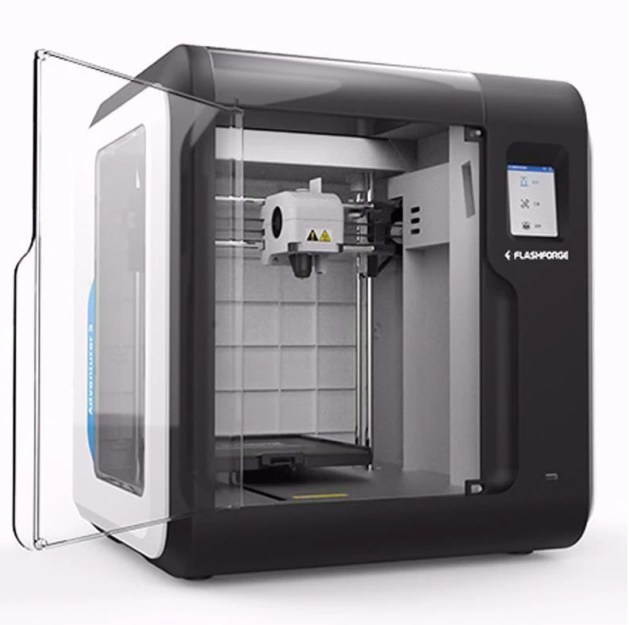MakerBot was poised to be one of the greatest success stories of the open source hardware movement. Founded on the shared knowledge of the RepRap community, they created the first practical desktop 3D printer aimed at consumers over a decade ago. But today, after being bought out by Stratasys and abandoning their open source roots, the company is all but completely absent in the market they helped to create. Cheaper and better printers, some of which built on that same RepRap lineage, have completely taken over in the consumer space; forcing MakerBot to refocus their efforts on professional and educational customers.
This fundamental restructuring of the company is perhaps nowhere more evident than in the recent unveiling of “SKETCH Classroom”: an $1,800 package that includes lesson plans, a teacher certification program, several rolls of filament, and two of the company’s new SKETCH printers. It even includes access to MakerBot Cloud, a new online service that aims to help teachers juggle student’s print jobs between multiple SKETCH printers.
Of course, the biggest takeaway from this announcement for the average Hackaday reader is that MakerBot is releasing new hardware. Their last printer was clearly not designed (or priced) for makers, and even a current-generation Replicator costs more than the entire SKETCH Classroom package. On the surface, it might seem like this is a return to a more reasonable pricing model for MakeBot’s products; something that could even help them regain some of the market share they’ve lost over the years.
There’s only one problem, MakerBot didn’t actually make the SKETCH. This once industry-leading company has now come full-circle, and is using a rebranded printer as the keystone of their push into the educational market. Whether they were unable to build a printer cheap enough to appeal to schools or simply didn’t want to, the message is clear: if you can’t beat them, join them.
A Familiar Face
While MakerBot hasn’t officially acknowledged that the design of the SKETCH has been borrowed from another manufacturer, those who keep their finger on the latest and greatest in the industry quickly recognized the machine for what it was. In the days following the SKETCH announcement we received a number of tips from members of the community who noticed this “brand-new” 3D printer from MakerBot bore a striking similarity to a piece of hardware currently sitting on their workbench.


There have obviously been cosmetic changes made to printer’s enclosure, but when placed side-by-side, it’s clear that the MakerBot SKETCH is a modified version of the Flash Forge Adventurer 3. The mechanical arrangement, from the removable print bed up to the unique enclosed extruder assembly, appears to be nearly identical between the two machines. The Adventure 3 even offers its own web-based management software, calling into question whether or not MakerBot Cloud might itself be a rebranded product.
Interestingly, MakerBot isn’t the only company who’s taken a liking to the Adventurer 3. Monoprice is currently selling their own version called the Voxel, with no obvious changes to the design outside the addition of their logo. Credit where credit is due, at least MakerBot put in the time and money to make their version match a bit better with the design language of their existing printer lineup.
Admittedly, if you’re going to pick a 3D printer to rebrand as your educational offering, you could do worse than the Adventurer 3. The fully enclosed design not only means it’s less likely that a curious child will reach into the machine, and that anything unsavory generated by the printing process will be contained. In fact, MakerBot has even gone a step farther and added an integrated filtration system to remove any particulates from the build chamber. The touch screen control and integrated network connectivity also go a long way towards making the machine easier to use for teachers and students alike.
It’s Not About the Printers
The Adventurer 3 is currently available directly from Flash Forge for $449, and the Monoprice Voxel is selling for an even $400. So for the price of the SKETCH Classroom pack you could get four printers, with potentially enough money left over to get some filament should you save a few bucks by going with the Monoprice version. If the goal was just to get a small print farm going, then obviously that would make the most sense.
But that’s not what the SKETCH Classroom pack is really about. While MakerBot’s track record would lead us to believe there’s a healthy markup on the hardware itself, the cost of the printers is really only half of the equation. You also have to take into account the cost of developing and maintaining the curriculum.
For educators, a complete turn-key solution like this is very appealing. Anyone can go on Amazon and pick up a pair of entry-level 3D printers, but they aren’t going to include the class materials or training that will help you keep a room full of preteens interested in them. Buying the hardware without a clear plan on how to turn it into a useful educational tool has left an untold number of 3D printers collecting dust in schools all over the world; if MakerBot’s new package can solve that problem there’s no question it’s worth the asking price.
No comments:
Post a Comment